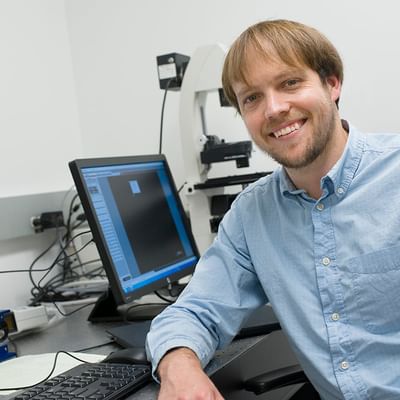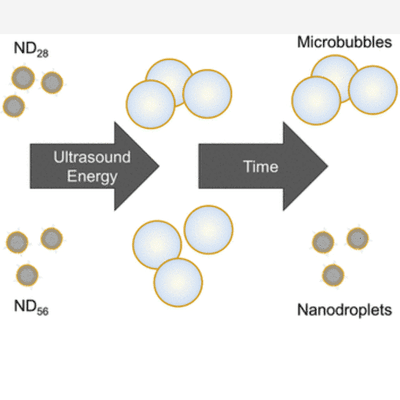- Undergraduate
Bachelor's Degrees
Bachelor of ArtsBachelor of EngineeringDual-Degree ProgramUndergraduate AdmissionsUndergraduate Experience
- Graduate
Graduate Experience
- Research
- Entrepreneurship
- Community
- About
-
Search

Kimberley S. Samkoe
Associate Professor of Engineering
Overview
Kimberley Samkoe is an associate professor of engineering at Dartmouth and was previously an assistant research professor in the Department of Surgery at Geisel School of Medicine. Dr. Samkoe’s current research interests involve molecular fluorescence imaging for quantitative assessment of in vivo molecular expression of proteins for cancer diagnosis, therapeutic monitoring and surgical resection. Her research takes a biological systems engineering approach to medical imaging by studying how microscopic molecular information can be interpreted at a macro-scale for cancer identification and diagnosis. Other research interests include photodynamic therapy, spectroscopy, and the physical chemistry of fluorescent molecules.
Research Interests
Quantitative fluorescence molecular imaging; fluorescence guided surgery; biomedical systems engineering; biological models of cancer; cancer diagnostics and therapeutic monitoring; optics in medicine; photodynamic therapy
Education
- BSc, biochemsitry, University of Regina 2001
- PhD, biophysical chemistry, University of Calgary 2007
Awards
- Faculty Research Award, Department of Surgery, Dartmouth-Hitchcock, 2019–2020
- R37 Method to Extend Research in Time (MERIT) Award, National Cancer Institute, 2018–present
- Harmes Scholar, Department of Surgery, Dartmouth-Hitchcock, 2014–2016
- Michael Lazar Community Service Award, Faculty of Graduate Studies, University of Calgary, 2006
- Alberta Ingenuity Fund Incentive Award, 2002–2007
- NSERC-eMPOWR Award, Natural Sciences and Engineering Research Council (NSERC) of Canada, 2002–2005
Professional Activities
- Member, American Society for Photobiology
- Selected Journal Reviewer: Photochemistry and Photobiology, Journal of Applied Physics, Photodiagnosis and Photodynamic Therapy, International Journal of Radiation Oncology Biology Physics
Research Projects
-
Photodynamic therapy
Photodynamic therapy
Photodynamic therapy (PDT) is a newly emerging therapy for displastic tissues, such as cancer, age-related blindness, pre-malignant transformation or psoriasis. The therapy involves the administration of a photosensitizing agent, together with the application of moderate intensity light to active the molecules to produce local doses of singlet oxygen. Ongoing research topics include, developing improved dosimetry instrumentation and software, fluorescence tomography imaging to sense drug localization, and assaying unique tumor biology and treatment effects in experimental cancers.
-
Fluorescence-guided surgery
Fluorescence-guided surgery
Fluorescence-guided surgery is important for the resection of some types of cancerous tumors where the tumor and normal tissue are similar in appearance and texture, and patient prognosis depends heavily on the completeness of resection. By selectively tagging tumor tissue with fluorescent dyes, it becomes possible to visually discriminate between normal and tumor tissues and improve significantly the completeness of tumor resection.
-
Optical molecular imaging
Optical molecular imaging
Optical molecular imaging is being used to provide molecular guidance in cancer surgery. Fluorescent contrast agents are in pre-clinical and clinical studies to image cancer tumors in vivo, with a dual focus, first on getting more accurate information out of the tissue, and secondly to provide better information about the specificity of the molecules as markers. Systems and algorithms for diffuse fluorescence imaging of tissue are studied, both as a stand-alone system, and as coupled to magnetic resonance imaging and computed tomography imaging. Tracer kinetic modeling is also being developed to allow quantitative imaging of molecular binding in vivo.
Selected Publications
- Samkoe KS, Sardar HS, Bates BD, et al. Preclinical imaging of epidermal growth factor receptor with ABY-029 in soft-tissue sarcoma for fluorescence-guided surgery and tumor detection. J Surg Oncol. 2019;119(8):1077‐1086. doi:10.1002/jso.25468
- Samkoe KS, Gunn JR, Marra K, et al. Toxicity and Pharmacokinetic Profile for Single-Dose Injection of ABY-029: a Fluorescent Anti-EGFR Synthetic Affibody Molecule for Human Use. Mol Imaging Biol. 2017;19(4):512‐521. doi:10.1007/s11307-016-1033-y
- DSouza AV, Lin H, Henderson ER, Samkoe KS, Pogue BW. Review of fluorescence guided surgery systems: identification of key performance capabilities beyond indocyanine green imaging. J Biomed Opt. 2016;21(8):80901. doi:10.1117/1.JBO.21.8.080901
- Tichauer KM, Samkoe KS, Gunn JR, et al. Microscopic lymph node tumor burden quantified by macroscopic dual-tracer molecular imaging. Nat Med. 2014;20(11):1348‐1353. doi:10.1038/nm.3732
- Samkoe KS, Tichauer KM, Gunn JR, Wells WA, Hasan T, Pogue BW. Quantitative in vivo immunohistochemistry of epidermal growth factor receptor using a receptor concentration imaging approach. Cancer Res. 2014;74(24):7465‐7474. doi:10.1158/0008-5472.CAN-14-0141
- Samkoe KS, Bryant A, Gunn JR, Pereira SP, Hasan T, Pogue BW. Contrast enhanced-magnetic resonance imaging as a surrogate to map verteporfin delivery in photodynamic therapy. J Biomed Opt. 2013;18(12):120504. doi:10.1117/1.JBO.18.12.120504
- Davis SC, Samkoe KS, Tichauer KM, et al. Dynamic dual-tracer MRI-guided fluorescence tomography to quantify receptor density in vivo. Proc Natl Acad Sci U S A. 2013;110(22):9025‐9030. doi:10.1073/pnas.1213490110
- Tichauer KM, Samkoe KS, Sexton KJ, et al. In vivo quantification of tumor receptor binding potential with dual-reporter molecular imaging. Mol Imaging Biol. 2012;14(5):584‐592. doi:10.1007/s11307-011-0534-y
- Samkoe KS, Chen A, Rizvi I, et al. Imaging tumor variation in response to photodynamic therapy in pancreatic cancer xenograft models. Int J Radiat Oncol Biol Phys. 2010;76(1):251‐259. doi:10.1016/j.ijrobp.2009.08.041
- Samkoe KS, Clancy AA, Karotki A, Wilson BC, Cramb DT. Complete blood vessel occlusion in the chick chorioallantoic membrane using two-photon excitation photodynamic therapy: implications for treatment of wet age-related macular degeneration. J Biomed Opt. 2007;12(3):034025. doi:10.1117/1.2750663
Courses
Loading courses...
Videos
Fluorescence Molecular Imaging for Improving Clinical Experience and Patient Outcomes in Oncology
Clinical Translation of Fluorescent Molecular Targeted Imaging Agents
News


In the News
The New York Times
Biden Awards $150 Million in Research Grants as Part of Cancer 'Moonshot'
Aug 14, 2024
Biden Awards $150 Million in Research Grants as Part of Cancer 'Moonshot'
Aug 14, 2024









